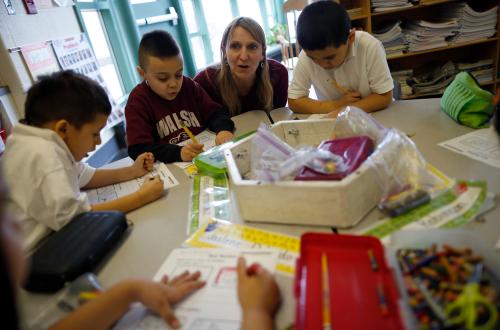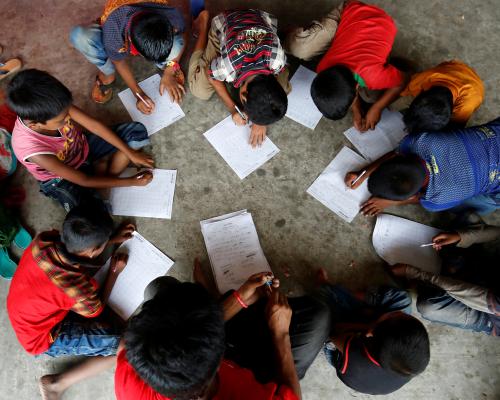This is the first in a six-part blog series on teaching 21st century skills, including problem solving, metacognition, critical thinking, collaboration, and communication in classrooms.
Over the past several decades, there has been increased demand for formal education to include the development of generic skills as well as traditional academic subjects, i.e., to include competencies for ways of thinking, ways of working, tools for working, and skills for living. These skills for today’s rapidly changing society, such as communication, problem solving, collaboration, and critical thinking, are being acknowledged increasingly all over the world. The big challenge, however, is knowing how to support and teach these skills in schools and classrooms.
In the absence of well-established, evidence-based approaches that demonstrate how to teach the skills and show how students have benefited from the process, countries are selecting a variety of paths to explore optimal models. For example, the “Singapore Swiss Roll” approach, which is starting to be implemented across the core curriculum, adopts a value-centric framework that incorporates 21st century competencies, including civic literacy, global awareness, and cross-cultural skills; critical and inventive thinking; communication, collaboration and information skills; as well as social and emotional competencies. Syllabi provided by the Ministry of Education offer guiding principles for the variety of teaching approaches that teachers can implement to enhance learning. Australia’s national curriculum of 2010 identified seven general capabilities, which teachers are expected to integrate throughout their teaching. They are guided by online resources provided by the Australian Curriculum Assessment and Reporting Authority.
In Costa Rica, with the understanding that the education system needs to progress to respond to the changing demands for skills, the National Development Plan for 2015-2018 and a new curriculum being rolled out in 2018, aims to emphasize the development and application of key 21st century skills and attitudes, such as socioemotional, communication, critical thinking, citizenships, and problem solving. Similarly, Kenya is currently developing their new competency-based curriculum, which is designed to integrate seven competencies within and across all subject areas, to ensure a comprehensive approach to skills development.
A major recommendation from an Asia-based review of the challenges facing countries as they adopt or integrate “21st century skills”, was to undertake in-depth research into the nature and development of the skills themselves. If we don’t understand what skills actually “look like” as children and adolescents at different levels of competence demonstrate them, then expecting our subject-based and trained teachers to teach them is an unfair impost at best and destined for failure at worst. We have historically taught children based on curricula—roadmaps to learning. These curricula have outlined the substance of what is to be taught, sequences to follow to ensure movement from the simple to complex, and expectations about the quality of anticipated student performance or knowledge.
Where are the curricula for skills? Surely, in order for teachers and students to know what simple forms of communication through to sophisticated look like, they need a roadmap. This roadmap then provides the guidelines for how educators can integrate development of student skills within existing and reform subject-based curricula. Creation of these roadmaps requires us to think developmentally, to identify how we develop the competencies. An important component is to identify what demonstration of these competencies might look like and how to elicit or stimulate performance so that we know what the individual is ready to learn.
In this new blog series, we will highlight classroom practices that provide concrete examples of how just a few different 21st century skills could be seamlessly integrated throughout the school day—not as a subject area, but by making it part of the classroom culture. We start with our next blog on problem solving, while the following one will be focused on a more “social” skill. Each blog will provide concrete examples of how professionals in teaching and research can pool their resources and expertise to demonstrate activities that can be undertaken with children in classrooms here and now.








Commentary
How do we teach 21st century skills in classrooms?
October 17, 2017